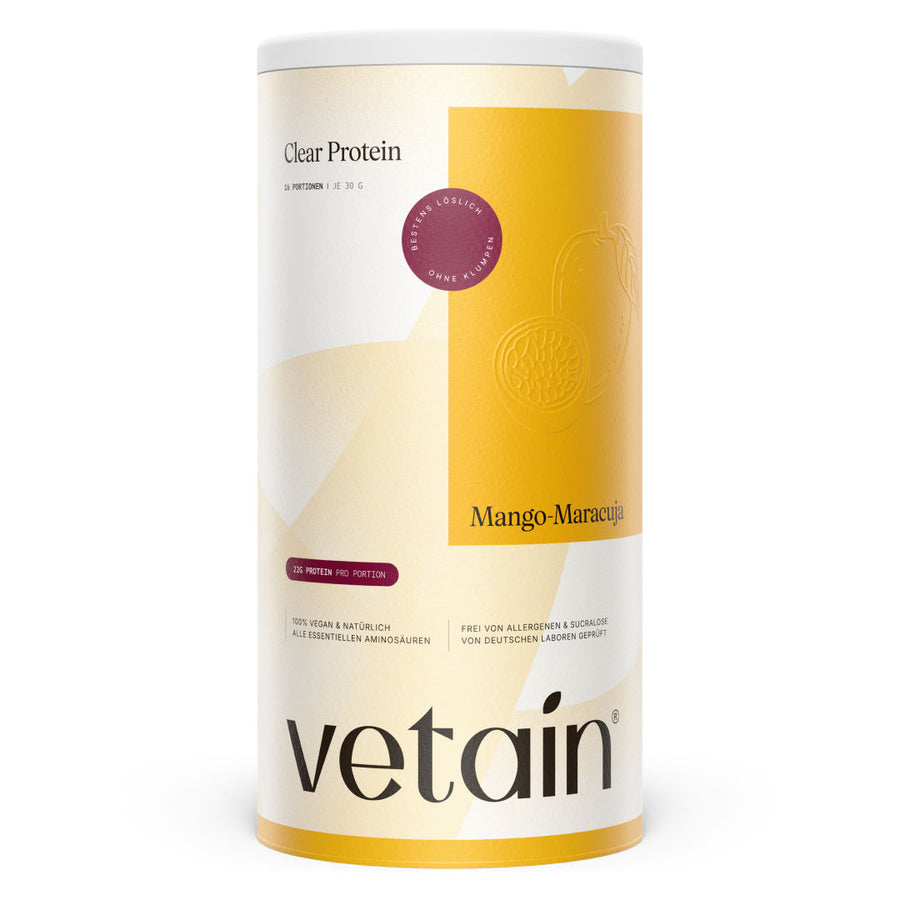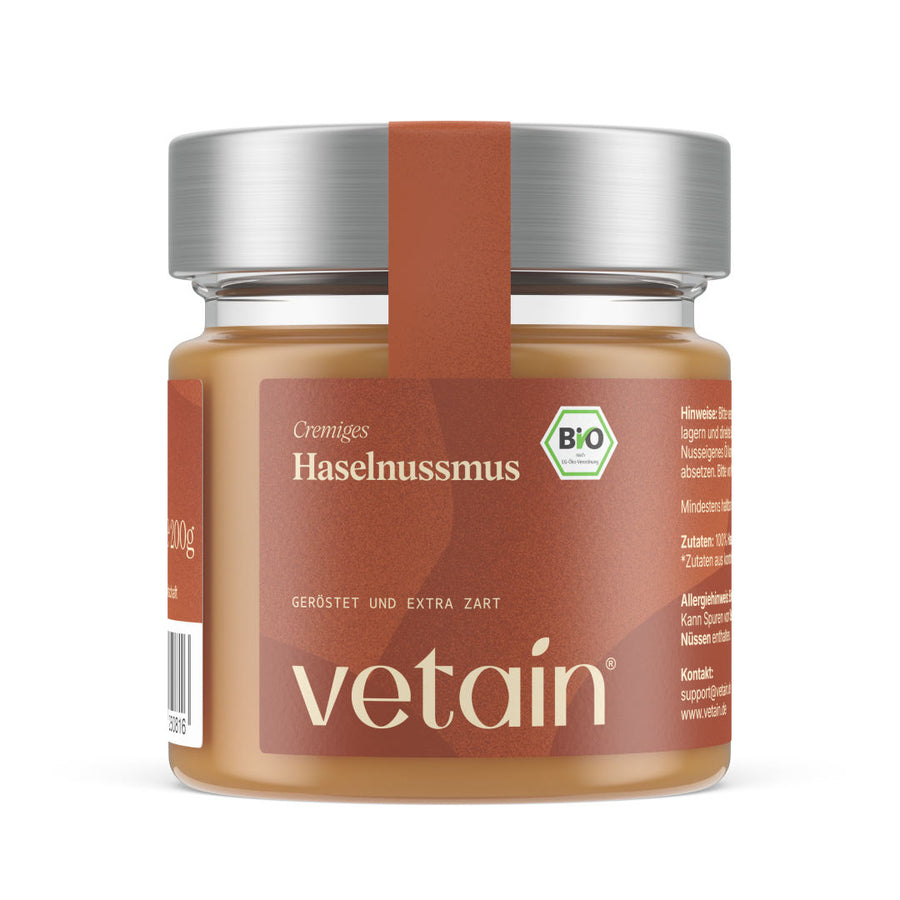Healthy eating is boring! If you still think so, it’s high time you read this article! Because healthy eating is so much more than cooked vegetables and mushy whole-wheat pasta. Promise!
In the next few minutes, we’ll get to the bottom of the question “What is healthy eating?” and show you how to bring healthy eating into your everyday life – with fun, ease, and without giving up great taste.
Your takeaways: What is healthy eating?
A healthy diet provides the essential nutrients and energy you need – in the right amounts.
A healthy diet includes fruit and vegetables, legumes, nuts, and more, while sugar and fast food shouldn’t be on the menu too often.
If you eat well, you actively contribute to a healthy lifestyle.
Simple tips can help you change your diet – and remember: healthy eating is a marathon, not a sprint.
“Unhealthy” foods are allowed sometimes – in moderation, not in excess.
Definition: What is healthy eating?
What is healthy eating in simple terms? A healthy diet provides you with essential nutrients and energy in the right amounts. To achieve that, it helps to eat plenty of healthy foods like fruit and vegetables, while consuming sugar or unhealthy fats less often. They aren’t really beneficial for our bodies – you probably know that already.
When you think of healthy eating, the DGE recommendations often come to mind: the 10 rules of the DGE or the well-known food pyramid.
Good news: we’ve already written an article about this: Balanced nutrition – what it’s all about. If you’re curious about what a healthy, balanced diet includes and how to implement it, have a look there.
In this article, we’ll focus on a few helpful basics, such as what matters for a healthy diet and why you should eat healthily.
5 reasons why healthy eating matters
Beyond the question of what healthy eating is – why is it so important? Let’s admit it: healthy eating doesn’t always sound exciting. So why bother?
Reducing nutrition risks: Eating well on a regular basis can support your normal body functions as part of a healthy lifestyle.
Aging on your terms: Think “today for tomorrow” – a healthy diet can help you maintain a healthy lifestyle into older age. That’s worth an extra serving of broccoli, right?
Boosting your quality of life: Healthy eating is about much more than weight. Those who eat well actively contribute to a healthy lifestyle.
Crushing it at the gym: Love the gym? A healthy diet can help by providing energy and nutrients – crucial for active people. That’s how you can really go full throttle!
Trying something new: When you change your diet, you’ll discover new foods and expand your culinary horizons – delicious!
If that’s not a reason to start making changes today!
What’s the “best” diet?
For many, “What is healthy eating?” isn’t enough – they want to eat as well as possible and find the best way to eat. If that’s you, I have to disappoint you: there is no ONE perfect diet that works for everyone.
As a quick example: nuts are super healthy for most of us, but for someone with a nut allergy they’re not recommended.
See what I mean? So let’s let go of the idea of a textbook-perfect diet. Instead, it’s always about individually better and less-good choices.
Healthy eating for beginners
I know – at first, the topic “What is healthy eating?” can be overwhelming. Everywhere you look, you’re told what you must eat and what you should never eat again. Don’t worry – we at Vetain get it and we’ve got your back. You’ll find a step-by-step guide here: Diet change – your plan.
Here are the basics in a nutshell:
How do I change my diet?
Okay, how do I eat healthily? Newsflash: radically changing your diet overnight and swapping cake, pizza, and white bread for carrots rarely works. We all have eating habits that have often been with us for a long time and are part of our routines. Forcing ourselves to eat completely differently and simply cutting out familiar routines and foods usually doesn’t lead to long-term success. A few days or weeks later, we’re back where we started. You have to like your diet to stick with it for the long haul.
So we need to establish healthier eating habits slowly and step by step – ones that make us feel good and happy. Tackle one new topic every week or two: for example, swap toast for whole-grain bread or grate a carrot into your pasta sauce. Small changes lead to long-term success. Slowly but surely, your diet will get healthier – and that’s truly sustainable.
What are the healthiest foods?
When you dive into what healthy eating is, you’ll quickly ask which foods are the healthiest.
You can recognize healthy foods by the fact that they contain lots of beneficial nutrients such as vitamins, minerals, or proteins. Use that as a compass in everyday life. Most of the time, you have a rough idea of a food and can estimate whether it’s nutrient-dense with lots of vitamins or nutrient-poor (e.g., fast food). Choose nutrient-rich foods as often as you can.
What should you eat every day? Our top 10:
Vegetables (broccoli, carrots, tomatoes, bell peppers, …)
Fruit (berries, oranges, apples, kiwis, …)
Legumes (lentils, beans, chickpeas, …)
Whole grains (bread, pasta, rice, …)
Nuts (walnuts, peanuts, hazelnuts, …)
Seeds & kernels (chia, flaxseed, pumpkin seeds, …)
Water (often underrated, but the best drink!)
Fermented foods (kimchi, sauerkraut, …)
Meat & fish or vegan alternatives
Dairy (products) and eggs or vegan alternatives
Ideas for your pantry to easily integrate these foods into everyday life:
%-product_content-%
Unhealthy food
What is healthy eating not? Sweets, fast food & co. We all know that. The problem? It’s easy to spiral into only thinking about what you’re not allowed to eat. You fixate on restrictions, and food becomes a very negative topic with no room for enjoyment. Countless lists like “10 foods you must never eat” with forbidden foods often do more harm than good.
Our take: healthy eating is above all about balance. No food is forbidden or “bad,” and “unhealthy foods” can show up on your menu from time to time. As a little treat, they can brighten your day. Just remember: moderation, not excess. The term mindful eating captures this perfectly.
%-split_content-%
So try to eat less of the products you know aren’t exactly healthy, such as …
high-sugar products
very high-fat foods
foods with very high salt content
ultra-processed products
low-nutrient products (so-called empty calories, e.g., white bread)
… Over time, they’ll lose their appeal and you’ll naturally reach for them less often – without forcing it.
Tips for healthy eating
It’s not only important to know what healthy eating is, but also how to put it into practice. Here are a few tips to make healthy eating a bit easier.
For many, eating out is the tricky part. In restaurants you’re often faced with fries, pizza & co. Take the pressure off. If you don’t eat out often, simply enjoy the evening and order what you truly want – even if it’s a greasy pizza. If you eat out or order in frequently, choose meals with plenty of vegetables and make smart sides (e.g., rice instead of fries). Often you can order several starters (they’re often more veg-forward) instead of one main.
Be mindful of whose nutrition tips you follow, and only take advice that leaves you with a good feeling. If certain info online only stresses you out or leads to negative body image, close the tab! Unfortunately, there are many “experts” online who don’t give good advice or have an unhealthy perspective on healthy eating.
Give your taste buds time to adapt. Even if you don’t love zucchini today, that could change in a few weeks. Your taste changes regularly, and so do the foods you enjoy. As you eat more vegetables & co., your body will usually adapt and you’ll start to like these foods. You’ll discover new flavor worlds – overly sweet products can become off-putting, while broccoli tastes incredibly delicious and intense. For foods you don’t like (yet), try different preparations – it often helps to learn to love them. Boiled carrots taste different than raw or roasted ones. At the same time, keep this in mind:
It’s okay to dislike certain foods. If you simply don’t like carrots, that’s fine. There are plenty of other foods you can eat.
Healthy eating weekly plan – example
What does healthy eating look like day to day? Here’s an example week:
Monday
Breakfast: Protein chocolate muesli + banana
Lunch: traditional Indian lentil dal
Dinner: open-faced protein bread with hummus and vegetablesTuesday
Breakfast: coconut chia pudding with mango
Lunch: vegan lasagna
Dinner: Green Goddess salad with tortilla chipsWednesday
Breakfast: vegan protein porridge
Lunch: leftover vegan lasagna + side salad
Dinner: open-faced protein bread with (vegan) cheese and veggie sticks with dipThursday
Breakfast: baked oats
Lunch: lentil stew
Dinner: pumpkin soup with breadFriday
Breakfast: baked-oats leftovers
Lunch: lentil-stew leftovers
Dinner: protein wraps with veggie fillingSaturday
Breakfast: protein banana bread
Lunch: pizza
Dinner: protein wraps with hummus and veggie sticksSunday
Breakfast: vegan protein pancakes
Lunch: leftover protein banana bread
Dinner: whole-grain pasta with tomato-veggie sauce
Snacks (every day): plenty of fruit, homemade protein bars, nuts
See? Your meal plan can sound super tasty and still be healthy. Give it a try!
Conclusion: What is healthy eating?
That was a lot of input. But by now we all know what healthy eating is and how to eat a balanced diet day to day. Always remember: your diet doesn’t have to be perfect! Just try to make good choices each day and treat yourself to a little extra now and then.
So, what does healthy eating mean for you personally?
Got questions? Feel free to email me – I’m happy to hear from you! :)
The information shared in this article does not replace individual medical or nutritional advice.















 9 Min
9 Min
 Zuletzt aktualisiert am 30.10.2025
Zuletzt aktualisiert am 30.10.2025





